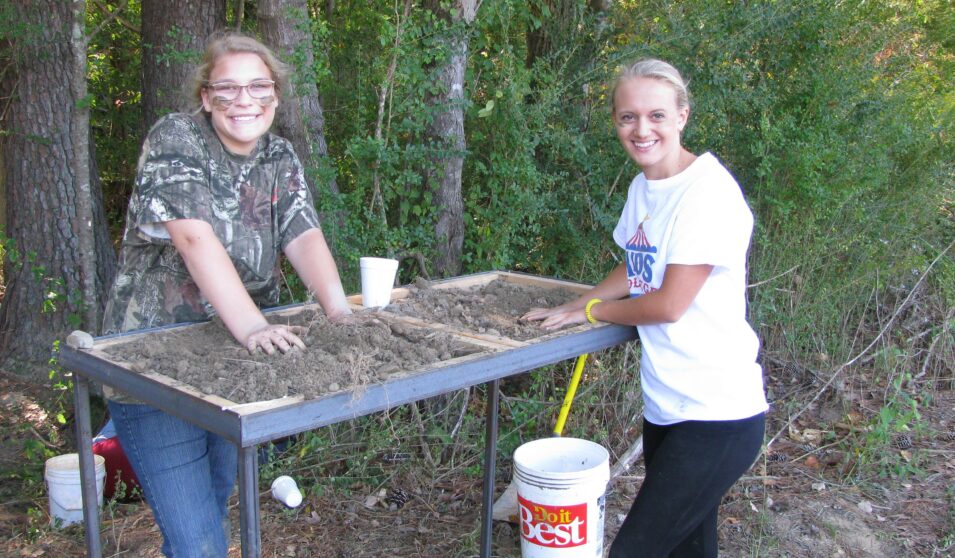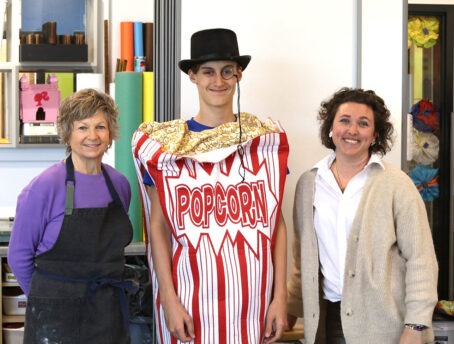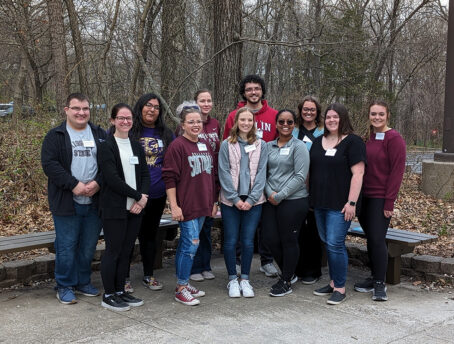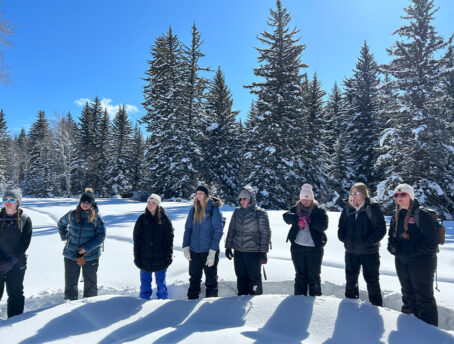Editor's Note: This year our Grants in Place program awarded Meredith Sears, Handley High School history department chair in Roanoke City, Alabama, a $1,050 grant for her student-led Archaeological Project. Support funding was provided by the Parker Griffith Family Foundation and the Alabama Education Association. Additional funding of $2,000 came from the Montgomery Family Foundation.
Lindsay Gaines Fincher is a Handley High School junior who participated in the dig. We are pleased to publish her wonderfully thoughtful essay on her experiences with this outstanding place-based project.
Digging into the History of Randolph County: A Community Studies Project
By Lindsay Gaines Fincher
When Mrs. Sears first told the community studies class about the weeklong archaeological site survey that we would be participating in, I was very excited! I love to be outside, and I'm always up for an adventure, so I was excited about the prospect of getting to spend a week exploring nature and ancient cultures right here in my hometown. After Mrs. Sears and Coach Glass told us about the previous digs and Mr. Dana Chandler explained to us what we could expect during the week, I was more excited than ever about getting to uncover history. When I was assigned to the Panther Clan, I knew that it was definitely going to be a fun and exciting week. During the team building exercises we participated in, we learned to compromise and work together, which proved very valuable on the site survey, but most importantly, we learned to have fun and make the best of every situation even when things weren’t going our way. Throughout the week of the dig, I learned many important things about archaeology, education, teamwork, and myself, including how to properly utilize archaeological methods to interpret our findings, how ancient history still influences us today, and how participating in an experience like this can help me to appreciate the world more.
On the first day of the dig, we worked in a location where we believed the head of a stream might have been located. We found some large rocks, but nothing else of any significance, so on the second morning we relocated to a new site in the cornfield at the edge of the mound, and we spent the next two days digging a four foot by four foot hole in this site which we later expanded to an eight foot by eight foot hole. In this pit, we found a few points and a fossilized bird bone when we dug deeper. On the fourth day of the dig, we moved to our third site which was still at the edge of the mound. This site proved to be the most important site that my team explored, and within the first hour of digging there, we found several points and knives from many different regions of the state in the plow zone. I found a knife made of Fort Payne chert and a point of Coastal Plains chert. These discoveries showed us that Native Americans had definitely lived in this area, and had possibly even traded here. I spent lots of my time screening the dirt, digging, and scraping the pits. My team found out that I had the most patience when it came to slowly scraping the dirt with a trowel, brushing it, and picking it with a bamboo stick or a dental pick, so I ended up being called over whenever we thought that an artifact had been discovered. I loved working on the dig, enjoying nature, and discovering the history of my hometown and the people that lived here before me.
Looking at the area where we worked on the dig, it wasn’t hard for me to imagine Native Americans living in this spot. The creek would have provided them with running water and an opportunity to fish. The cornfield we dug in was used to grow crops. We found lots of charcoal in the dirt, which could be evidence of slash-and-burn farming techniques used to fertilize the field. The woods surrounding the cornfield would have provided ample opportunities for the Native Americans to hunt for food. The two mounds that we discovered and the path from the stream showed us that the Native Americans definitely had a civilized culture here, and their surroundings would have provided them with food, water, plants, clay, and other materials they used for everyday life. The natural materials we encountered while on the dig helped us gain a greater understanding of how the Native Americans lived, and exploring their lands helped me feel connected to the people who inhabited this land before we did.
Aside from the knowledge that I gained about archaeology and the history of Native Americans in this area, I also learned lots about myself, teamwork, the outdoors, and education in general. When discussing the dig in class, I was excited about getting out of school for a week with my friends, being outside, and trying something new and adventurous. I had no clue how much I would end up loving learning about ancient cultures, participating in the physical aspects of the job, and working with my classmates to discover history. I had originally hoped to find lots of “cool” artifacts, and while finding the points and pottery was certainly a highlight of the week, the excitement of probing a spot with soft soil, the mystery of uncovering dirt with color changes, and the enthusiasm of each morning as we looked forward to what the day would hold was equally as rewarding as finding actual artifacts. As I started to literally uncover history, I realized that we were fortunate enough to get to find artifacts and experience the feeling of being connected to ancient civilizations that lived in the same land that we do, which made me realize how small we actually are in the grand scheme of the world’s history.
Lindsay Fincher "discovers history" at the dig site.
The dig was by far the best week of school that I have had in my 12 years of education. I am always interested to learn new things, but being able to discover and experience these things firsthand helped me gain a greater understanding of the material we talked about in class. Instead of just studying for a test, I got to unearth the culture itself, which enabled me to truly appreciate and grasp what I was learning. I would recommend that all students get to experience something like this during their high school career. The dig helped me make new friendships with students I didn’t previously know, connect the past and the present, and experience something that I didn’t know I had a passion for. The dig was truly an amazing experience, and I will carry the memories made, knowledge gained, and friendships formed during the week with me forever.
Check out this excellent video on the Handley High School project: You can learn more at the Randolph County Heritage website that is maintained by the students and their teachers.
Lindsay Gaines Fincher is a junior and honor student at Handley High School, where she is involved in many service clubs and academic honor societies including the Anchor Club, Mu Alpha Theta Honor Society, HHS Community Studies Class, Student Government Association (Junior Class Secretary), and the Handleyan Yearbook Staff where she serves as the co-editor. Lindsay currently holds the title of Miss Center Point’s Outstanding Teen, a local preliminary of the Miss America’s Outstanding Teen Pageant, as she spreads her platform of Stand Tall America: Adolescent Scoliosis Screening to schools and legislators across the state of Alabama. Lindsay is also a trained vocalist and dancer; she sings with the Young Singers of West Georgia and is a competitive dancer on The Dance Center On Main’s competition dance team. She has traveled across the country performing and competing and has trained with the Institute of American Musical Theater, Broadway Dance Center, and the Joffrey Ballet School in New York City.
Merridith Sears (pictured below), our Grants in Place awardee, is the History Department Chair at Handley High School in Roanoke City, Alabama:





